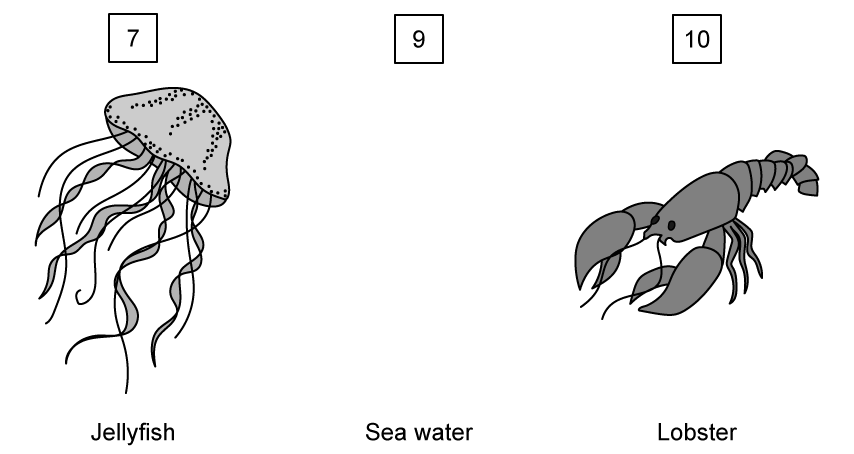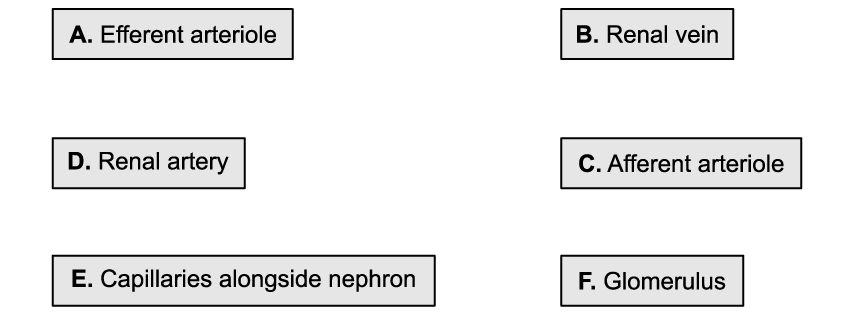a)
The names of six blood vessel types that carry blood in and around the kidney are shown below as A - F .
Place these blood vessels into the correct order through which blood passes during normal circulation.
[3 marks]
Assess your score
View Answer
b)
State the relationship between the length of an organism's Loop of Henlé and the conditions that the organism lives in.
[2 marks]
Assess your score
View Answer
c)
Certain species of animal that survive in very arid habitats can drink very little water. Instead, they derive much of their water intake from respiratory water.
Explain what respiratory water is.
[2 marks]
Assess your score
View Answer
d)
State the name of the hormone that controls the level of water that is excreted via the kidney.
[1 mark]
Assess your score
View Answer
Previous Question Next Question
a)
Blood undergoes ultrafiltration in the kidney.
Define ultrafiltration.
[2 marks]
Assess your score
View Answer
b)
Outline the composition and role of the basement membrane in ultrafiltration.
[2 marks]
Assess your score
View Answer
c)
Explain the ways in which the following adaptations of the proximal convoluted tubule (PCT) help the PCT to carry out its function.
1.
Microvilli on the inner surface
2.
Many mitochondria in epithelial cells
3.
Tightly-packed cells in the epithelium
[3 marks]
Assess your score
View Answer
d)
Distinguish between the afferent and efferent arterioles in the kidney.
[2 marks]
Assess your score
View Answer
Previous Question Next Question
a)
Maintaining water levels in cells and tissues is an example of a negative feedback system.
Define the term 'negative feedback'.
[2 marks]
Assess your score
View Answer
b)
The negative feedback mechanism of osmoregulation relies on the hormone ADH, antidiuretic hormone.
Certain compounds, when in the blood, act as diuretics. Ethanol is one example.
Use your knowledge of the action of ADH to suggest the effect of a diuretic drug such as ethanol.
[2 marks]
Assess your score
View Answer
c)
During haemodialysis treatment of kidney failure, the patient's blood and the dialysis fluid flow in opposite directions within the dialysis machine.
Identify the name of this kind of flow and give one reason why it is set up in this way.
[2 marks]
Assess your score
View Answer
d)
Urinalysis can detect the presence of many compounds in the urine and can give information about the state of a person's renal health.
List two possible illnesses that could cause protein to be detected in urine.
[2 marks]
Assess your score
View Answer
Previous Question Next Question



